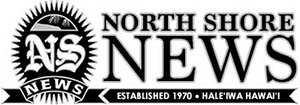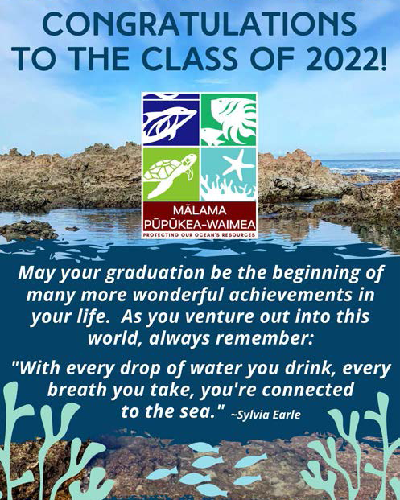Legislature Passes Historic Bill for Three-Year Pilot Program To Assess Carrying Capacity of Pūpūkea Marine Life Conservation District
By Denise Antolini, President, Mālama Pūpūkea-Waimea
On April 29, 2022, the Hawaiʻi Legislature unanimously passed a bill, SB3330, introduced by North Shore Senator Gil Riviere and supported by Representative Sean Quinlan, to fund a three-year pilot program administered by the State Department of Land and Natural Resources (DLNR) to assess the “carrying capacity” of the Pūpūkea Marine Life Conservation District (MLCD). The bill received 100% supportive testimony
and is awaiting the signature of Governor David Ige.
Established in 1983 and expanded to 100 acres in 2003, the Pūpūkea Marine Life Conservation District (MLCD) is one of only three MLCDs on Oʻahu and eleven statewide. Based on “carrying capacity” studies conducted in 2018-2020, Hanauma Bay modernized its management system to reduce the impacts on marine life of overcrowding. That MLCD now has two “rest days” each week, limitations on visitors, and priority access for residents. In contrast, the Pūpūkea MLCD has no limitation on the number of people who can access or use the area. Certain areas of the Pūpūkea MLCD, particularly Kapoʻo Tidepools and Sharks Cove, heavily promoted by the visitor industry, have become “loved to death” – pushing out residents who have long enjoyed the area and damaging marine life habitat.
As North Shore residents know, the Pūpūkea MLCD had a brief “rest period” during the early stages of the pandemic. Marine life quickly rebounded and extraordinary water clarity returned to the nearshore areas. During that period, Mālama Pūpūkea-Waimea conducted human use and biological surveys in the Kapoʻo Tidepools and Sharks Cove areas. We found that, given a break from thousands of feet a day trampling the tidepools, the marine life rebounded quickly. In Kapoʻo Tidepools alone, we counted over 70 different species of fish!
This unusual “COVID pause” gave our community the rare opportunity to see an ecosystem we love recover — on its own, in real time. But the respite was brief. Tourism has bounced back to peak levels and is predicted to increase in the near future. North Shore residents know the beaches in this area have become more crowded, now every day of the week. Data back this up. Over the past ten years, MPW has observed a tripling in visitor use of sensitive areas like the Kapoʻo Tidepools – now, between 1000-2000 people each day are trampling and impacting the marine life in this fragile, shallow-water area of the Pūpūkea MLCD. Perhaps not a coicidence, Mondays are when Hanauma Bay is closed, and social media is apparently redirecting firsttime snorkelers to Kapoʻo and Sharks Cove. Ironically, on high-surf days that close out nearby beaches, inexperienced visitors flock o wade in the Tidepools, unaware of the fragility and richness of that marine habitat.
Can the sensitive areas of the MLCD ecosystem sustain that level of use? The goal of SB3330 is to take the lessons learned from the “pandemic pause” and the Hanauma Bay experience, and determine how to better mangage the diverse areas of the MLCD to achieve a healthy and abundant marine reserve in perpetuity. SB3330 also requires DLNR to report back to the Legislature in 2026, which will strengthen a future management plan for the Pūpūkea MLCD, supporting the goals of the State’s “30×30 Holomua Initiative” to effectively manage 30% of Hawaiʻiʻs nearshore areas by 2030.
Mahalo to our elected representatives and our community for supporting the health and abundance of the Pūpūkea MLCD!



